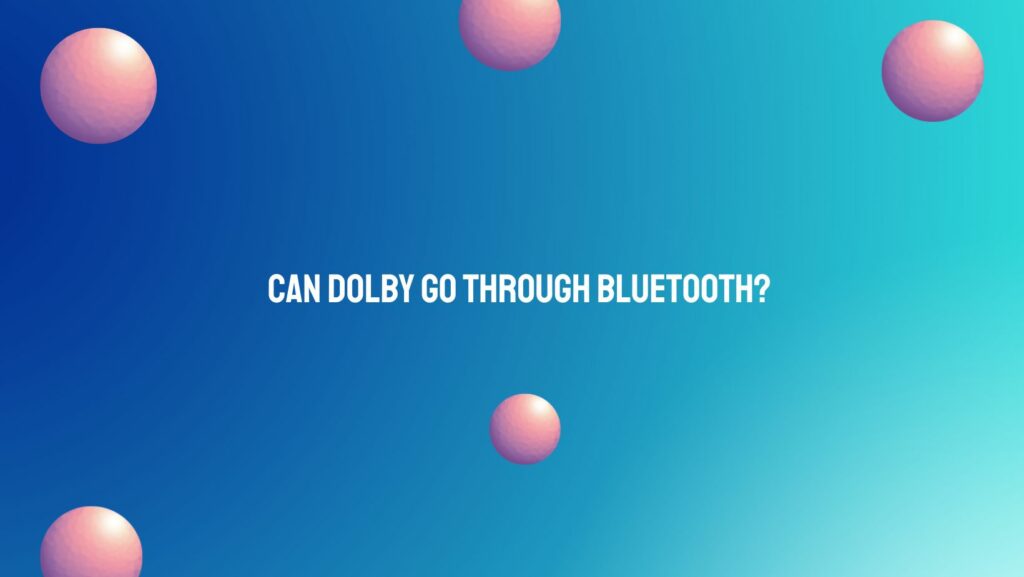In the pursuit of seamless and high-quality audio experiences, the marriage of Dolby audio technology with the convenience of Bluetooth has sparked curiosity and enthusiasm among audio enthusiasts. The question at the forefront of this exploration is: Can Dolby audio, renowned for its immersive soundscapes, truly go through Bluetooth? In this article, we delve into the intricacies of Dolby and Bluetooth, examining their compatibility and the evolving landscape of wireless audio transmission.
Understanding Dolby Audio: Dolby, a pioneer in audio technology, has consistently pushed the boundaries of sound reproduction. Dolby audio technologies, including the acclaimed Dolby Atmos, introduce innovative approaches to enhance audio realism, creating a more immersive and lifelike experience. Dolby technologies are often associated with high-end home theaters, cinemas, and professional audio setups.
Bluetooth Technology: A Wireless Bridge: Bluetooth, on the other hand, has become ubiquitous for wireless audio connectivity. From headphones to speakers, Bluetooth provides users with the freedom to enjoy music and audio content without the constraints of physical cables. However, the technology has inherent limitations, including bandwidth constraints and compression, which can impact the fidelity of audio signals.
Dolby and Bluetooth Compatibility:
- Bluetooth Codecs:
- Bluetooth audio transmission relies on various codecs, such as SBC, AAC, aptX, and LDAC, each with its own compression and quality characteristics. While these codecs are suitable for standard audio playback, the intricacies of Dolby audio, particularly formats like Dolby Atmos, pose a challenge.
- Dolby and Compression:
- Dolby audio, known for its high fidelity, often involves complex encoding and decoding processes. Bluetooth’s compression may affect the quality of Dolby-encoded audio, leading to compromises in the richness and precision of the sound.
- Advanced Codecs:
- To address these challenges, manufacturers have introduced advanced Bluetooth codecs like aptX HD and LDAC. These codecs offer higher bitrates and improved audio quality, potentially accommodating the demands of Dolby audio formats to a certain extent.
- Content Source and Device Compatibility:
- Dolby-encoded content needs to be sourced from compatible devices. Streaming services like Netflix, Amazon Prime Video, and others offer Dolby audio content, but the playback device must support both Dolby and the chosen Bluetooth codec for a seamless experience.
- Practical Considerations:
- While advancements in Bluetooth technology have enhanced audio quality, achieving a true, uncompressed Dolby audio experience through Bluetooth may still face limitations. Practical considerations, such as signal stability, codec support, and device compatibility, play a crucial role in the overall audio performance.
Conclusion: The compatibility of Dolby audio with Bluetooth represents a dynamic interplay between cutting-edge audio technologies. As Bluetooth codecs continue to evolve, bridging the gap between wireless convenience and audio fidelity, enthusiasts can look forward to increasingly immersive and high-quality wireless audio experiences. While achieving a full, uncompromised Dolby audio experience through Bluetooth may present challenges, the ongoing advancements in both technologies promise an exciting future where the boundaries of wireless audio are continually pushed, offering users a harmonious blend of convenience and audio excellence.


